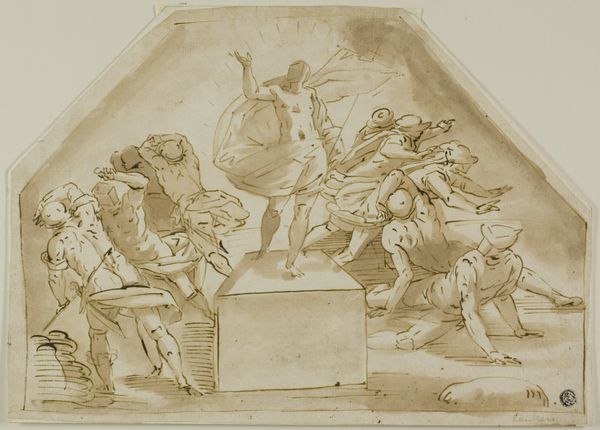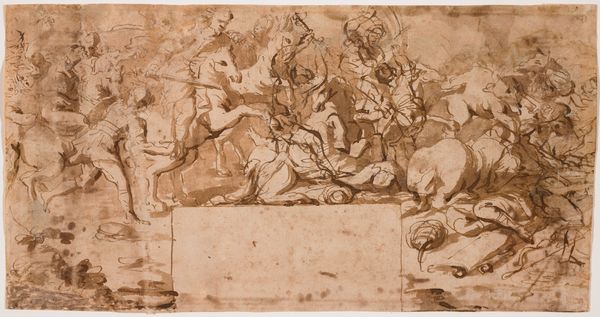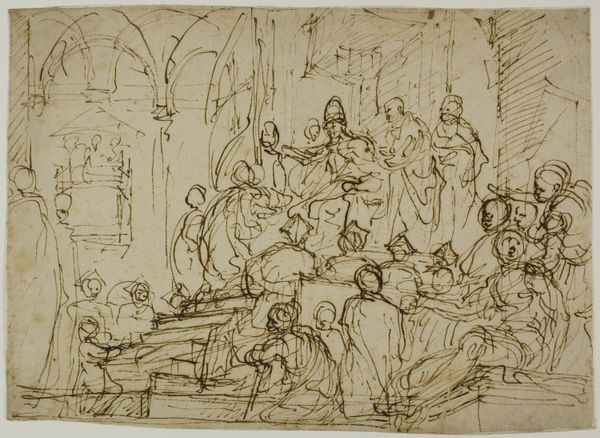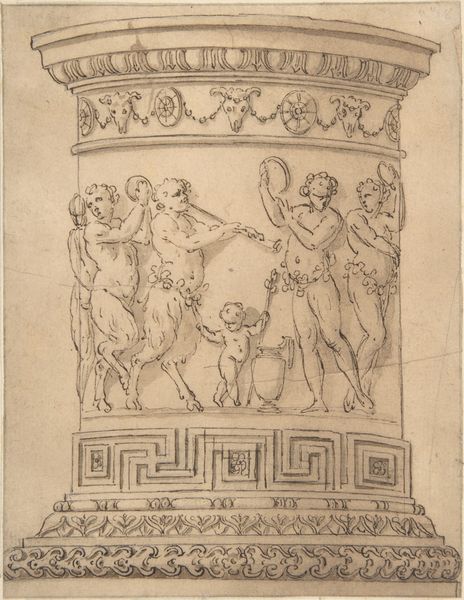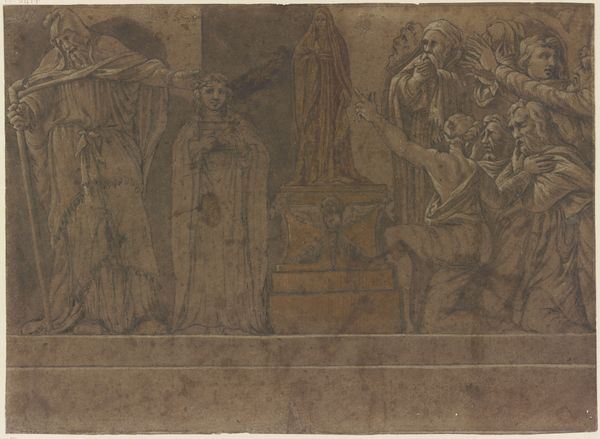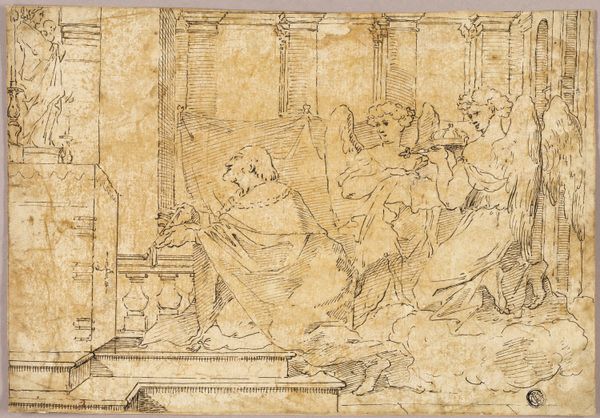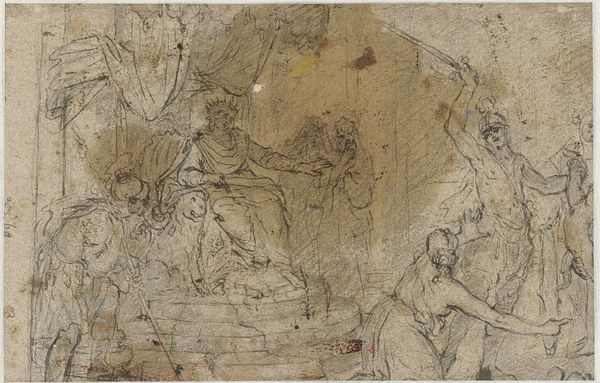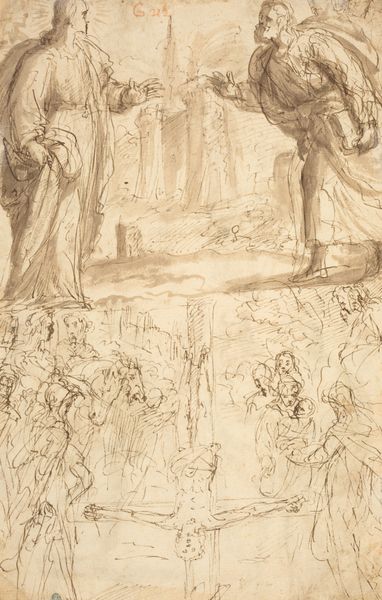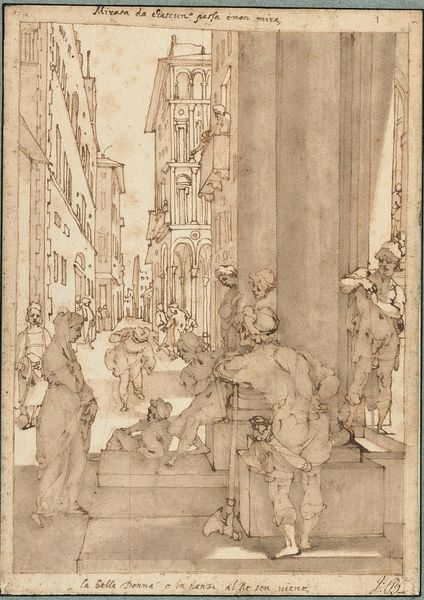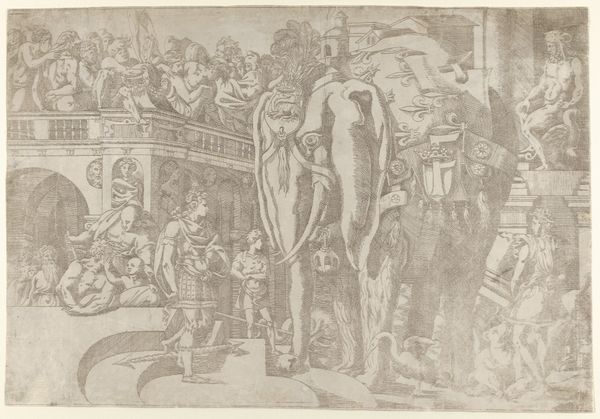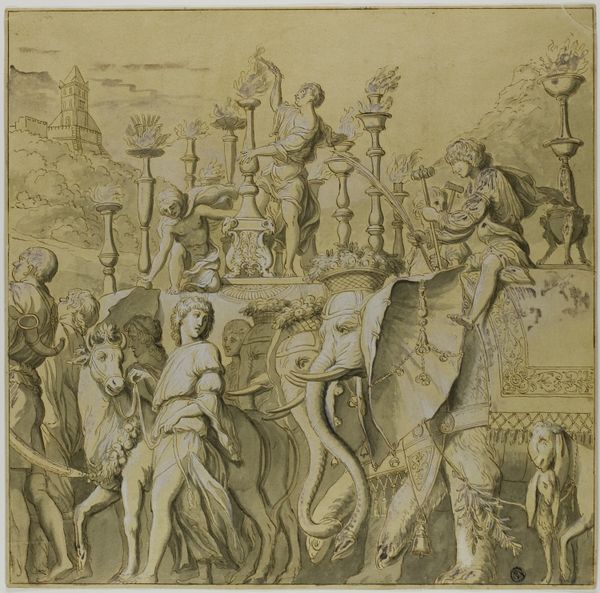
The Dioscuri on Monte Cavallo; verso: Study of a Spiral Staircase 1528 - 1538
0:00
0:00
drawing, print, etching, paper, pencil
#
drawing
# print
#
etching
#
pencil sketch
#
landscape
#
charcoal drawing
#
figuration
#
paper
#
11_renaissance
#
pencil drawing
#
pencil
#
horse
#
history-painting
#
italian-renaissance
#
male-nude
Dimensions: Sheet: 8 1/2 x 9 3/4 in. (21.6 x 24.8 cm)
Copyright: Public Domain
Editor: This drawing, "The Dioscuri on Monte Cavallo," created between 1528 and 1538 by Maarten van Heemskerck, captures my attention with its intense detail despite being just pencil, pen, and maybe some etching. The figures feel powerful and monumental, even in this preliminary state. How should we approach understanding its role as a drawing in the Renaissance? Curator: That's an excellent observation. It's important to recognize that during the Renaissance, drawings like this weren't merely preparatory sketches, they had a distinct social function. Heemskerck's image documents, but also interprets and disseminates, classical sculptures, effectively shaping their reception. Editor: So it's less about personal artistic expression and more about documenting and shaping public perception? Curator: Precisely. Think about the power dynamic. Here's Heemskerck, a Northern European artist, traveling to Rome, encountering these grand monuments, and then producing images for circulation. These prints became key ways through which Renaissance artists in Northern Europe could encounter and absorb classical artistic principles without ever visiting Rome. The question becomes, whose vision of antiquity are we seeing? Is it Rome’s or Heemskerck's? Editor: It's interesting to consider this piece not just as a drawing, but as a vehicle for cultural exchange, influenced by the artist's own perspective. Curator: Exactly. And think about the intended audience: fellow artists, collectors, those interested in the burgeoning field of art history. It speaks to a desire for a shared visual language rooted in classical ideals, but filtered through a specific historical and cultural lens. Did seeing it that way alter your understanding? Editor: Definitely! It pushes me to think beyond the aesthetic and towards the social and historical context of the work. It gives it a kind of power I didn't initially consider.
Comments
No comments
Be the first to comment and join the conversation on the ultimate creative platform.
